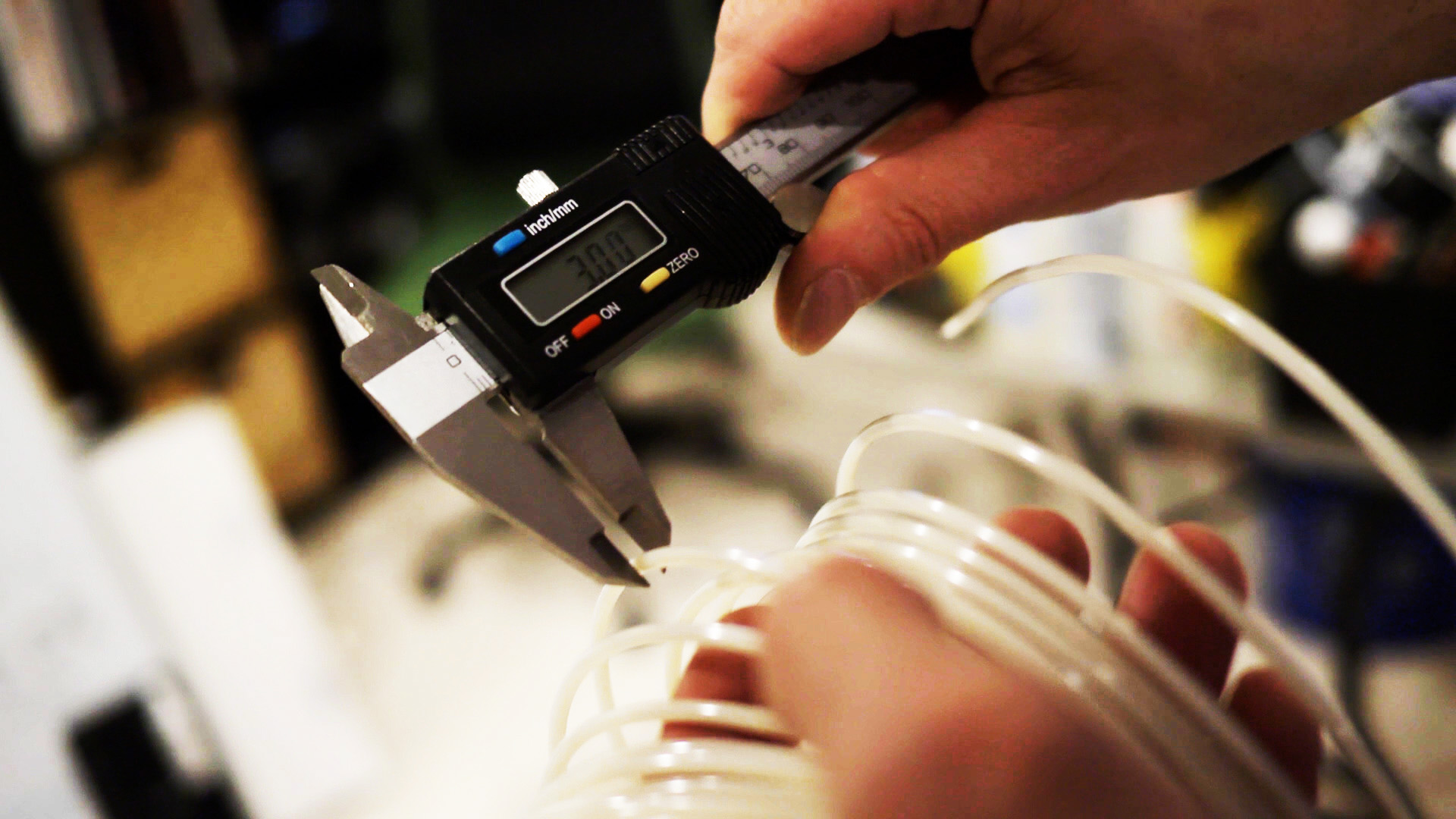Building Better Plastic Filament

One proposed method of ensuring quality is to inspect filament with a 2-way laser gage. Courtesy of Indiegogo.
Latest News
May 20, 2013
3D printers can create all kinds of marvels, ranging from objects with complex internal geometries to the simple Yoda bust. No matter what you want to make, the one thing you need (beyond the printer) is material. In the case of most desktop or hobbyist additive manufacturing (AM) systems, the material you’ll be using is plastic filament.
The fly in the ointment is that most plastic filament isn’t produced specifically with AM in mind. Filaments that retain moisture or contain contaminants of any sort can result in a misshaped object or clogged extruder head. An Indiegogo project is seeking to remedy this problem by producing filament that is as pure as possible.
The project is fronted by Michael Cao and Larry Knopp. According to the pitch page, Cao has been involved in the automotive industry for around 10 years as a product design engineer specializing in interiors. Knopp has a mechanical engineering background and works as an IT systems expert. Both have worked extensively with various AM systems and have been appalled at the quality of filament available. From the site:
Together, we’ve gone through A LOT of filament from various producers and are frankly tired of poor quality in the form of loose diameter tolerances, DEBRIS in filament, low quality raw plastic base and paying overseas shipping in some cases.
The duo intends to improve quality by focusing on four key areas of production. They intend to 1) measure filament with a 2-way laser gauge to ensure diameter and roundness, 2) develop methods to ensure the cleanliness of plastic pellets used to created filament, 3) purchase raw materials from the best sources, and 4) run pellets through a drying system to ensure no moisture remains behind.
The project is currently focused on ABS filament, but they team says it will work on PLA if the Indiegogo campaign is a success. Similarly, the duo will begin work with 3mm filament, before moving to 1.75mm filament. As of this writing, the campaign is $13,083 funded out of a $20,000 goal with nearly a month left.
Below you’ll find the project video.
Source: Indiegogo
Subscribe to our FREE magazine, FREE email newsletters or both!
Latest News
About the Author
John NewmanJohn Newman is a Digital Engineering contributor who focuses on 3D printing. Contact him via [email protected] and read his posts on Rapid Ready Technology.
Follow DE






